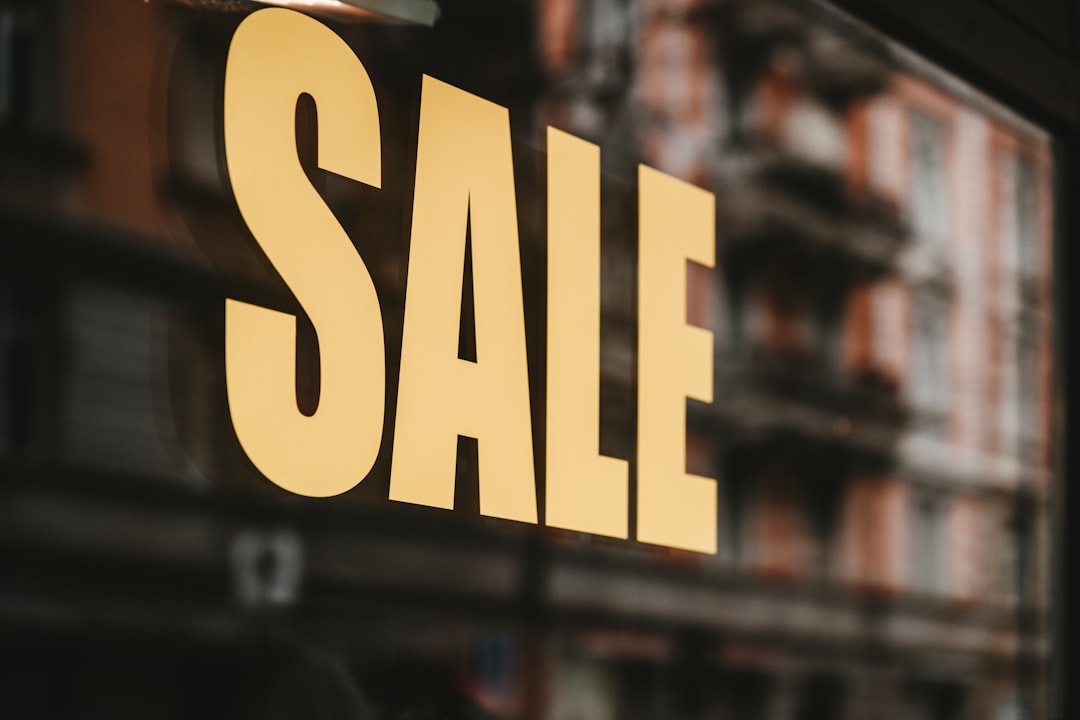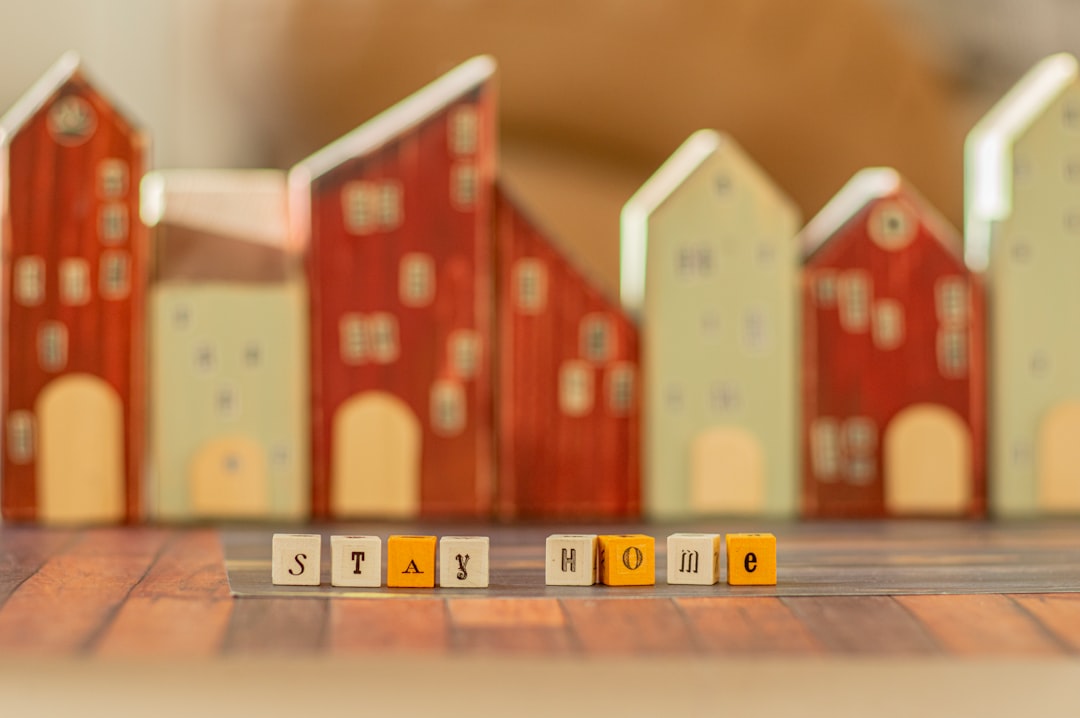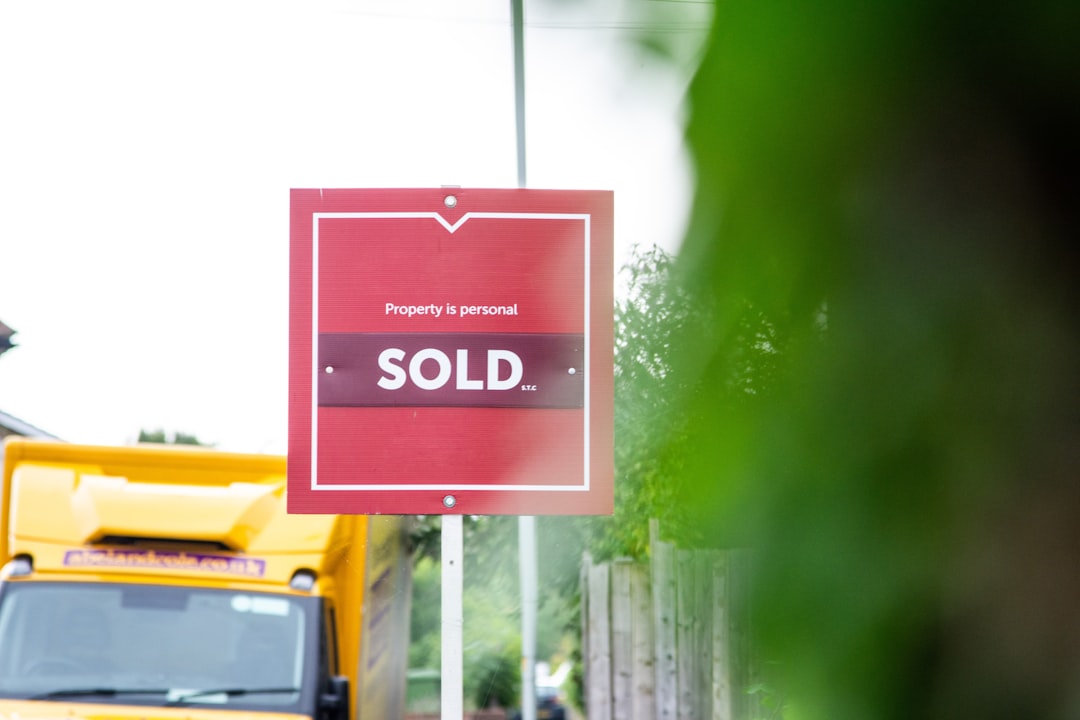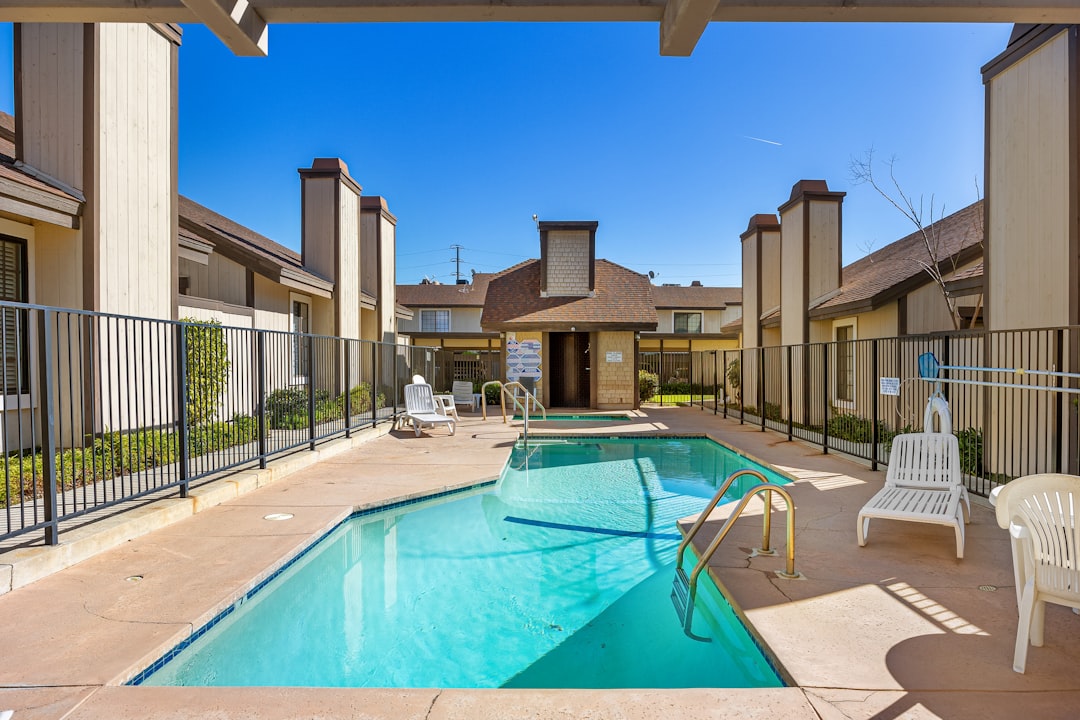

Engage prospects with a scan and streamline customer engagement with FREE QR code marketing tools by Sona – no strings attached!
Create a Free QR CodeFree consultation

No commitment

Engage prospects with a scan and streamline customer engagement with FREE QR code marketing tools by Sona – no strings attached!
Create a Free QR CodeFree consultation

No commitment
The real estate auction services sector is undergoing rapid digital transformation, yet persistent challenges remain, especially in bridging the gap between fleeting in-person interactions and meaningful, trackable digital engagement. Auction professionals often rely on printed signage and open house flyers that provide brief exposure but fail to capture contact details or nurture interest beyond the event.
This disconnect between physical marketing and digital lead management leads to missed opportunities, as high-value prospects may review property brochures or attend auctions without formally registering. As a result, companies remain unaware of interested parties and are unable to follow up effectively. Modern solutions, like QR codes, provide a frictionless bridge from any physical asset to a digital journey, capturing registration, granting access to property documents, or enrolling buyers in follow-up workflows with a simple scan. For a broader view of how this plays out in property marketing, see real estate QR codes.
The following sections reveal proven workflows and QR code deployment strategies designed specifically for real estate auction services. Discover how integrated QR solutions can enhance lead capture, uncover actionable buyer intent, and deliver measurable returns on every marketing initiative, transforming auction events and campaigns into engines for sustainable growth.

Capturing high-value leads at auction events remains a stubborn industry challenge. Too often, interested buyers engage with property materials without taking the extra step to register, resulting in prospect information never making it into your CRM. This invisibility not only means lost opportunities but also makes future retargeting or follow-up nearly impossible, since there is no digital trace of who interacted with your assets.
Modern solutions now allow auction firms to replace outdated sign-up sheets and manual forms with QR-powered digital experiences, streamlining registration and ensuring every inquiry is surfaced instantly. By placing QR codes on event signage, flyers, and printed ads, businesses can funnel buyers into tailored registration pages or auction pre-qualification flows, capturing rich contact and intent data with every scan. The experience is swift and mobile friendly, so buyers do not have to type long URLs or wait for staff to collect paper forms.
Every scan action can be connected to real-time analytics, letting teams set and optimize for KPIs such as registrations per scan, attendance, and post-event engagement. This level of visibility surfaces which physical assets and messages actually drive meaningful leads, not just impressions. For example, scanning a property flyer at an open house can instantly register a prospect, sync their interest to the CRM, and trigger automated follow-up workflows. This removes the delay that often lets competitors reach hot leads first and it equips sales teams with context to personalize outreach based on which property, price tier, and asset the prospect engaged with.

Auction marketing has long struggled with bridging offline and online engagement. Auction attendees may browse signage, property documents, or direct mail, but unless they fill out a form, their interest remains invisible. This lack of visibility into anonymous offline traffic means that some of the industry’s most promising leads pass unnoticed and unpursued, which can depress conversion rates and reduce pipeline quality for upcoming sales.
QR codes elegantly solve this long-standing gap by turning every physical touchpoint into a digital entry point. Scanners are directed to the exact next step you want, whether that is pre-registration, disclosure downloads, or a private preview request. This gives the buyer an intuitive path to act and gives your team a reliable way to capture identity, intent, and timing. The result is less guesswork and a stronger alignment between marketing spend and measurable outcomes.
Effectively tracking buyer engagement across a diverse marketing landscape requires flexible QR code formats. Traditional property flyers and event signage rarely provide a clear digital path for follow-up, which leads to untracked interest and missed conversion. Selecting the right QR format for the outcome you want ensures that every scan prompts the right action and the right data capture.
The format should be chosen based on the intended outcome. For immediate registration, use a form link with minimal fields and autofill options. For ongoing relationship management, use vCards and SMS to make it easy to connect. For agile campaigns that evolve over time, adopt dynamic QR codes so you can swap destinations, run A/B tests, and preserve measurement continuity without reprinting collateral.

Many auction companies struggle to pinpoint where to focus outreach, which leads to missed active buyers at key moments and inefficient spend on low-impact tactics. Growth opportunities usually appear at the intersections of high intent and high foot traffic. Mapping QR code placement to these precise touchpoints unlocks more registrations, better segmentation, and faster follow-up across the auction lifecycle.
Once you align placements with buyer journeys, you will notice more consistent performance across campaigns. Use dynamic QR codes and segment-specific landing pages to test value propositions by location or asset, such as promoting financing partners near urban transit ads or highlighting agricultural property data on rural signage. This granular approach surfaces which creative and channel combinations drive the highest conversion rate from scan to registration.

Traditional manual sign-up processes make valuable prospects wait, and they create unnecessary administrative friction for staff. When interest is hot, even a brief delay can open the door for competitors. Auction professionals are addressing this by embedding QR workflows into their most common interactions, replacing analog choke points with digital speed and visibility.
These use cases demonstrate how engagement can be captured at every step, from the first glance at a yard sign to the final exchange of documents. The result is a stronger pipeline of verified, high-intent buyers and a more reliable method for learning which assets and messages resonate.
One persistent industry challenge is the inability to retarget high-intent audiences who interact with offline materials but never fill out a digital form. QR codes convert those moments into measurable signals that feed remarketing, sales outreach, and nurturing flows. By designing QR deployments with segmentation in mind, you can automatically organize leads by intent, stage, and property interest. For tactical retargeting, see Sona’s Playbook titled intent-driven retargeting: driving high-impact campaigns with first-party intent signals at Sona Playbooks.
With a thoughtfully designed tagging structure, QR codes help you retarget based on real behaviors rather than assumptions. You can speak differently to an investor who scanned a multifamily brochure and to a homeowner who scanned a single-family yard sign, which improves relevance and increases conversion rates.
Many firms find their marketing fragmented. Online ads, direct mail, and on-site events often operate as separate tracks, which leads to inconsistent messaging and gaps in follow-up. QR codes act as a unifying thread, connecting offline engagement with digital workflows so that every scan becomes part of a single, measurable journey.
When QR codes are integrated across channels, your team can automate the next best step everywhere. The buyer experience becomes consistent and predictive, regardless of whether the first scan happens at a yard sign or during a virtual showing. A centralized platform like Sona QR helps manage codes, monitor performance, and sync scan data with your CRM and ad platforms so your campaigns work together instead of in silos.
Launching a QR-powered lead capture program is straightforward when you treat it like any other performance campaign. Clarity on goals, format, creative, deployment, and measurement is what turns scans into registrations and registrations into revenue. Use the steps below to plan a repeatable process that scales across properties and auction events.
By following this checklist and centralizing your codes and analytics, you give your team a common operating picture of what is working and why. This consistency allows rapid iteration on headlines, placements, and landing pages without sacrificing measurement fidelity.
Define the primary outcome for each QR code before you design or print anything. Your goal might be pre-registration for an upcoming multi-property auction, disclosure downloads for a single feature listing, or appointment booking for private previews.
Pick the QR format that aligns with the action. Static codes can work for fixed destinations, while dynamic codes unlock tracking, A/B testing, and flexible updates without reprints.
Design choices have a direct impact on scan rates. Make the code visually obvious, high contrast, and paired with a benefit-driven call to action. Test the scan experience under real conditions to eliminate failure points.
Place QR codes where intent is high and attention is focused. Match the code size and CTA to the medium so it is scannable from the expected distance and context.
Treat scan data like a live feedback loop. Review performance weekly during campaign windows and after each major event, then iterate on creative, CTA, and destinations to improve conversion.

Auction teams have long struggled to connect marketing activity with real sales results. A flyer may drive awareness, but without a digital handoff you cannot attribute interest or measure which placements move the needle. QR codes, combined with the right analytics stack, make it possible to connect the dots from scan to registration to bid to closed transaction. Sona is an AI-powered marketing platform that turns first-party data into revenue through automated attribution, data activation, and workflow orchestration, which you can explore on Sona.
With a modern platform, you can see which codes are scanned, by whom, and in what context. You can also track the buyer journey after the scan, including form completion, content consumption, and subsequent event attendance. These insights help you refine where to invest in print, which messages to promote, and how to train staff to prompt scanning at crucial moments.
This level of attribution turns QR codes from a tactical novelty into a performance engine. You can demonstrate which physical surfaces generate leads, which messages convert, and how scan behavior predicts bidding activity.
Scaling QR deployments across properties and markets requires consistent execution and thoughtful testing. The following best practices help you raise scan rates, improve data quality, and turn more scans into qualified registrations.
By treating scans as triggers for action instead of vanity metrics, you can create a system that both captures and capitalizes on offline buyer intent. Consistent tagging and integration ensure that every new code strengthens your data foundation and your ability to retarget with precision.
In practice, leading auction houses often discover that high-value leads come from unexpected sources that would escape traditional tracking. QR codes make those sources visible and measurable, which reshapes how teams allocate spend and staff attention.
These examples reinforce a core principle. When you connect offline engagement with digital data capture and segmented follow-up, results compound. The best outcomes often come from simple, repeatable patterns, like putting a clear CTA next to every QR code and ensuring the landing page offers immediate value.
Across the auction services sector, teams encounter avoidable pitfalls that limit QR success. Most issues stem from weak calls to action, poor placement, or disconnected tools. Addressing these areas early creates a smoother path from scan to registration to revenue.
Avoiding these pitfalls keeps your program resilient as inventory changes and market conditions evolve. A strong operational foundation lets you scale QR usage across regions and property types without losing measurement rigor.
QR codes have evolved from novelty to necessity in real estate auction services, allowing every physical asset to become a digital entry point. By addressing long-standing industry pain points such as anonymous offline engagement, slow lead capture, and inconsistent messaging, these tools turn fleeting buyer interest into measurable pipeline growth and, ultimately, more successful transactions.
Embedding QR strategies throughout print, event, and direct mail marketing enables auction professionals to surface high-value prospects the moment intent is shown. This not only maximizes lead quality and data for segmentation but also enables more timely and relevant follow-up, factors that can make the difference between winning and losing in competitive property auctions.
With a unified approach and robust QR management, every scan becomes a signal for action. For auction service companies with an eye toward long-term growth, mastering QR code integration is not just a tactical advantage, it is the foundation for an agile, data-driven lead generation engine. Start creating QR codes for free.
QR codes have revolutionized real estate auction services by turning traditional listings and promotional materials into dynamic, lead-generating assets. They enable seamless customer acquisition, enhance bidder engagement, and provide instant access to property details, auction schedules, and registration forms—all while capturing valuable data to optimize your marketing efforts. Imagine knowing exactly which auction flyers or signage drive the most qualified leads and being able to act on that insight immediately.
With Sona QR, you can create dynamic, trackable QR codes in seconds that update in real time without needing to reprint materials. This means every scan is connected directly to your lead pipeline, allowing you to retarget serious buyers and measure the true impact of your campaigns. No more missed opportunities—just smarter, more efficient auctions.
Start for free with Sona QR today and transform every scan into a winning lead or closed deal in your real estate auctions.
Real estate auctions involve marketing properties through physical and digital channels where buyers register interest, often at events, and place bids, with lead capture and follow-up facilitated through tools like QR codes for efficient engagement and sales.
Real estate auction services benefit sellers and buyers by providing transparent, competitive bidding, timely lead capture, and enabling faster transactions through integrated digital tools like QR codes that improve registration, follow-up, and conversion.
Prepare your property by creating printed materials such as flyers and signage embedded with QR codes that direct buyers to registration forms, property disclosures, and virtual tours to capture high-value leads and streamline buyer engagement.
The article does not specify types of real estate auctions but focuses on auction marketing workflows and digital lead capture strategies applicable across various auction formats.
Find reputable providers by evaluating their use of modern digital marketing tools like QR code integration, CRM connectivity, real-time analytics, and their ability to deliver measurable returns and sustained pipeline growth.
QR codes improve lead capture by converting offline interactions into digital registrations, enabling instant data capture, syncing with CRMs, allowing real-time analytics, and facilitating timely follow-up workflows that boost conversion rates.
Common QR code formats include web links to property pages or registration forms, vCards for contact sharing, instant forms for event registration, SMS or email prompts for inquiries, and dynamic QR codes for flexible content updates.
Place QR codes on event signage, flyers, brochures, yard signs, direct mail, billboards, transit ads, and online channels to capture buyer interest at high-intent touchpoints and convert passive views into measurable leads.
Build retargeting audiences by assigning unique QR codes by auction stage, tagging audiences by buyer type and scan context, analyzing location and timing data, and integrating scan data with CRM and advertising platforms for precise follow-up.
Best practices include clarifying campaign goals, selecting appropriate QR code types, branding and testing codes for visibility, deploying codes in high-impact locations, and tracking performance to refine messaging and improve conversion.
Tracking captures scan details like time, device, and location, links scans to registrations and bids, integrates with CRM systems, and attributes revenue to specific marketing assets, enabling data-driven decisions and ROI measurement.
Avoid unclear calls to action, poor code placement, lack of staff training, privacy compliance issues, and using disconnected tools that hinder data consolidation and measurement, all of which can reduce scan rates and lead quality.
Expand success by using distinct QR codes per asset, adding UTM parameters for attribution, automating post-scan workflows, training staff and attendees on scanning benefits, and creatively integrating codes into various marketing materials.
Examples include dynamic QR codes on all flyers and signs to triple registrations, syncing scan data to ad platforms for better targeting, and using QR codes in direct mailers to double response rates and build investor pipelines.
Use Sona QR's trackable codes to improve customer acquisition and engagement today.
Create Your FREE Trackable QR Code in SecondsJoin results-focused teams combining Sona Platform automation with advanced Google Ads strategies to scale lead generation

Connect your existing CRM

Free Account Enrichment

No setup fees
No commitment required

Free consultation

Get a custom Google Ads roadmap for your business






Launch campaigns that generate qualified leads in 30 days or less.
